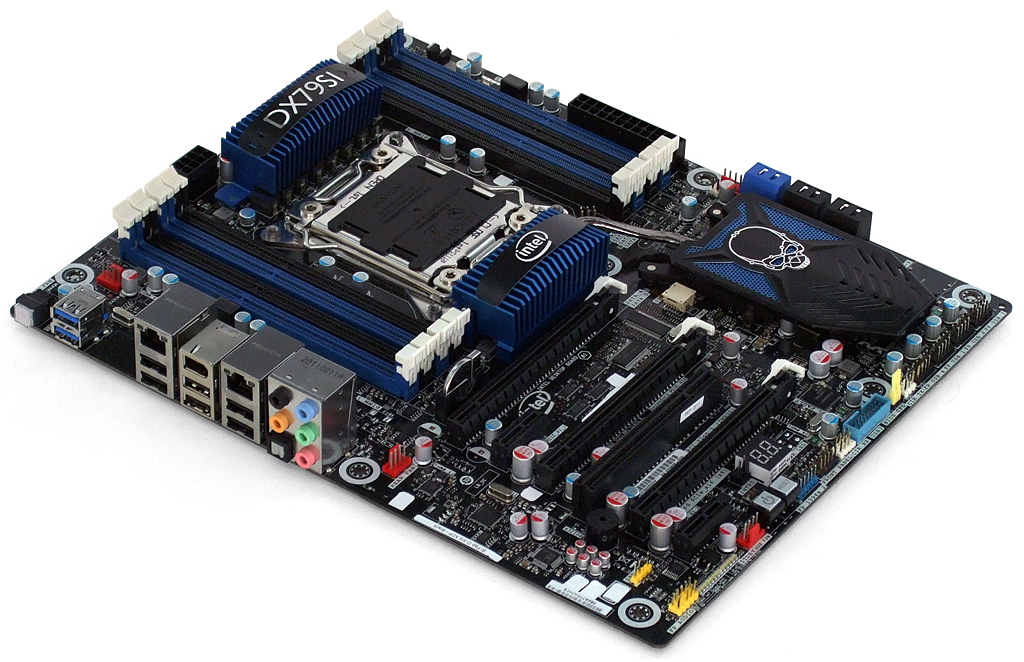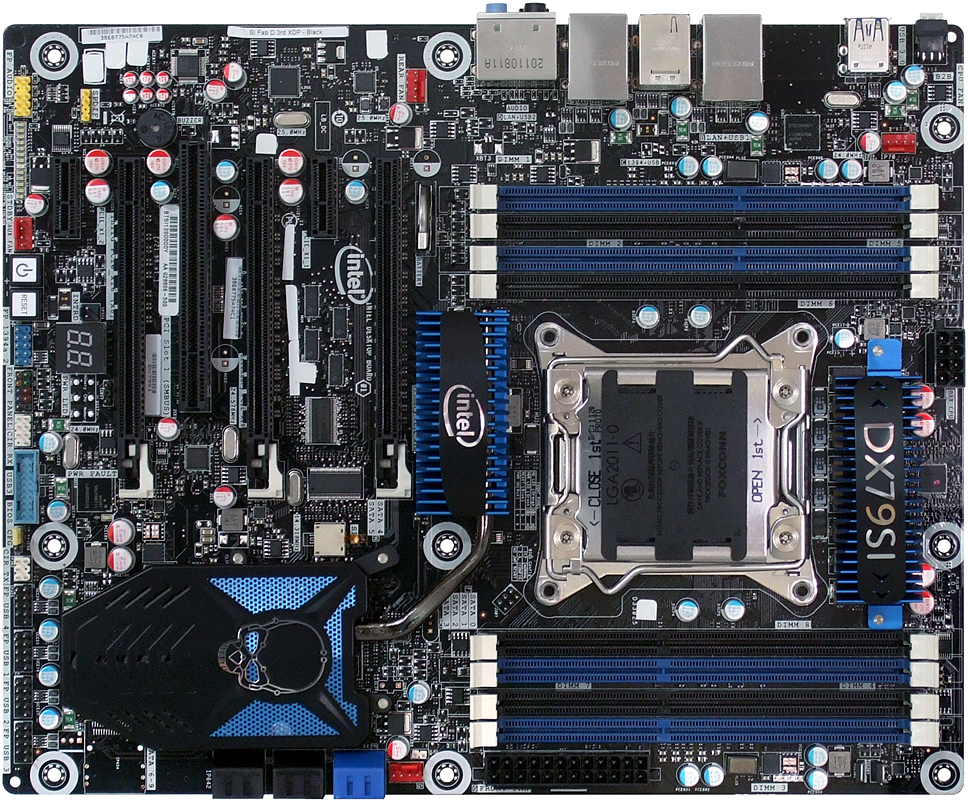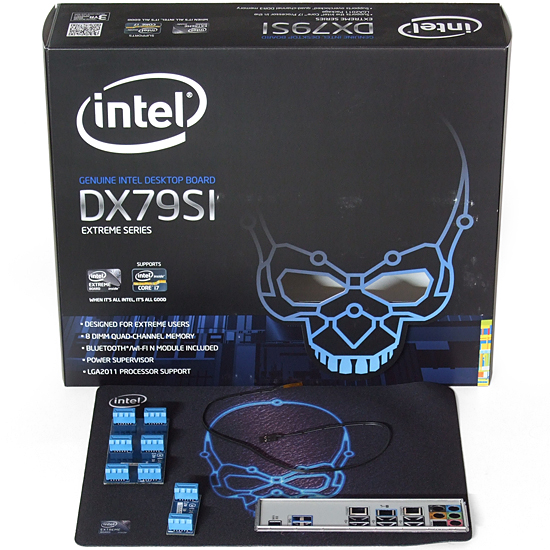Seven $260-$320 X79 Express Motherboards, Reviewed
With 40 lanes of PCIe 3.0 connectivity to host all of our high-bandwidth devices, LGA 2011 certainly qualifies as a premium processor interface. Today we examine seven X79-based motherboards that offer high-end features at a more palatable price.
Intel DX79SI
Not content to be the standard on which its partners improve, Intel’s enthusiast-class offerings meld a few exclusive features and the firm’s legendary stability. The DX79SI goes full-speed into the heart of this market by providing two Intel gigabit Ethernet controllers and eight DIMM slots at a moderate $280 price.
A white “Back to BIOS” button on the rear panel is particularly useful to overclockers, as it forces the system to boot at default values without changing the custom settings of the BIOS menu. Some boards achieve similar functionality automatically after detecting a boot failure, but this manual option avoids the problem of a non-detected boot failure or a hang after booting.
Intel finally got around to using the front-panel USB 3.0 header that early-implementer ASRock credited Intel for designing a long time ago. But we were a little surprised to find legacy features like PCI and FireWire on a board that lacks PS/2 connectivity. We can be certain that the internal USB 3.0 header is located far enough below the bottom PCIe x16 slot that it doesn’t interfere with the installation of most graphics cards.
Overclockers will love the DX79SI’s internal power and reset buttons, along with a Port 80 diagnostics display to supplement a row of device status LEDs along its bottom edge. The front of that lower edges is a little better-endowed than most competing designs in that it supports up to eight front-panel USB 2.0 ports or devices, leaving us to complain only that the front-panel audio port is stuffed a little too far back into the bottom-rear corner.
A more questionable layout consideration is the x16-x16-x8 pathway arrangement for three-way CrossFire or SLI. Many builders would be tempted to use the upper and lower x16 slots in their dual-card configurations to improve cooling between boards. But doing so limits the lower card to x8 mode, while leaving the center x16 slot empty.
Our DX79SI arrived without several accessories, so we checked a few sellers and found that retail customers get a driver CD, four SATA cables, and a Bluetooth/Wi-Fi module. That last item might have been a key point of interest if it had been included with our sample.
Get Tom's Hardware's best news and in-depth reviews, straight to your inbox.
-
Crashman jprahmanSo when will we see results with a C2?It's going to take around a month to prepare another roundup...so I guess good news comes with bad news, sorry.Reply -
Crashman amuffinfoxconn boards are pretty good.They've been making decent enthusiast boards on-and-off for a while.Reply -
morne Quick coment on looks only (I know its specs that count not looks but oh well)Reply
ASRock X79 Extreme6/GB - very nice all black looks better than gigabytes atempt
Asus P9X79 Pro - new baby blue they use on all the boards... not for me
ECS X79R-AX - looks like my old pentium 2 board with the white slots
Foxconn Quantumian-1 - i like i like gives a feeling of the ROG ASUS boards
Gigabyte X79-UD3 - rip of from the ASRock X79 Extreme6/GB (lol) plus the southbridge heatsink looks old fasion and ugly.
Intel DX79SI - now this board for me looks good actualy more than good looks the best :) must be the scull lol
MSI X79A-GD65 8D - also very nice love the blue + Black.
If you have one of the boards and i insulted it, wasnt the intention, just my view of the board>
-
stingstang My only question is.. Why do you guys need 6 freaking $1050 processors? Good golly gosh!Reply -
ubercake Great descriptive article.Reply
One thing I'm not sure of is the acceptance and actual usage of eSATA. While practical at some level, is anyone actually using this MB feature or is this one of those things the MB producers can skip out on like parallel and serial ports? I'm not sure enthusiasts are all that into using their eSATA ports?
Personally, I think this is one of those money saving opportunities MB producers should consider. -
geekapproved After the X58 anal pounding, you would be a moron to buy a X79. It's life is predicted to be even shorter than X58.Reply -
morne Actualy i agree with you ubercake, i have never used my E-sata, and with usb 3.0 out doubt anyone still uses E-sata if they have before.Reply



